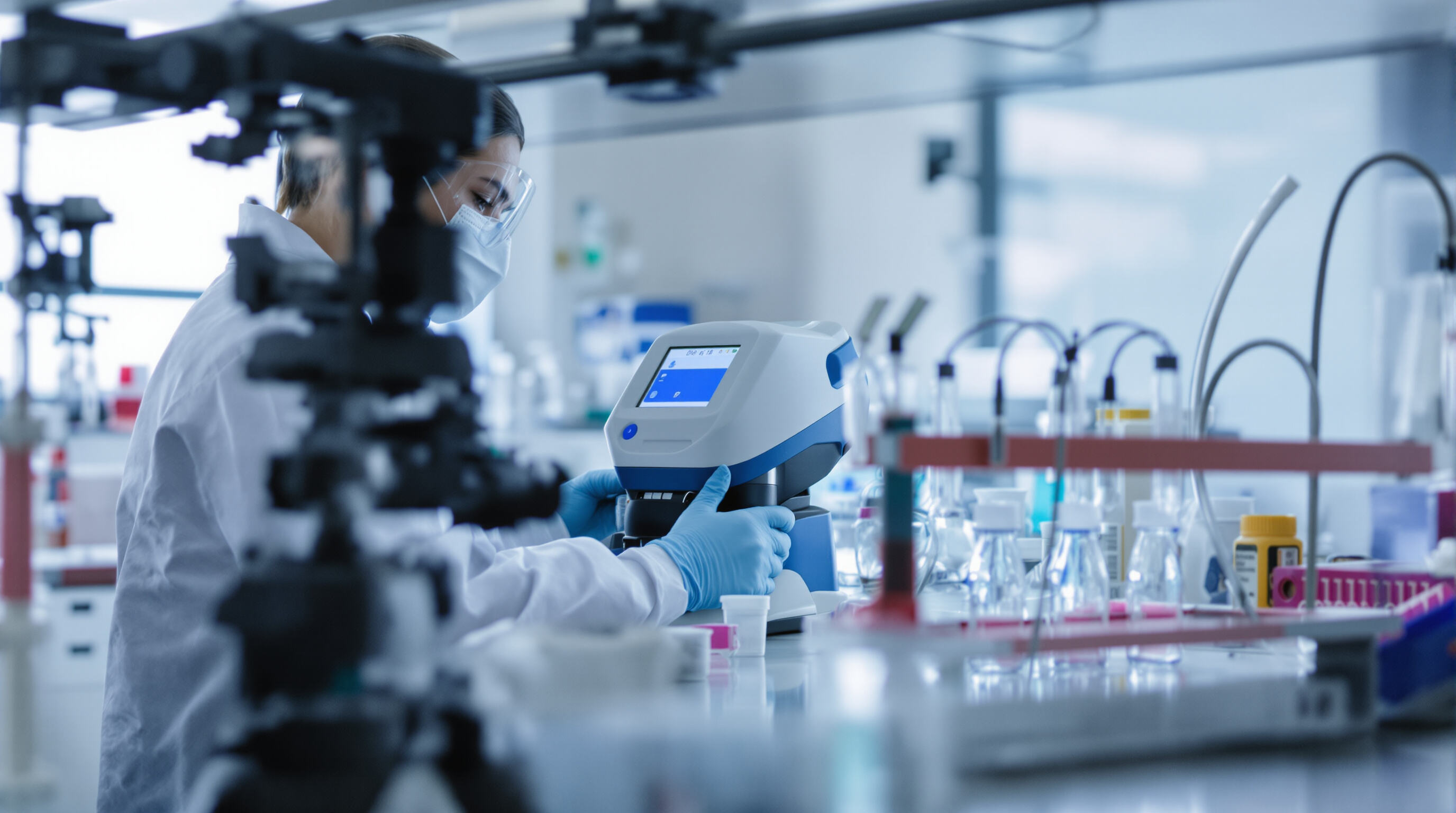วิธีตรวจสอบความแม่นยำในการวัดคลอรีนตกค้างทั้งหมด
การทำความเข้าใจเกี่ยวกับคลอรีนตกค้างทั้งหมดและวิธีการวัดหลัก
บทบาทของคลอรีนตกค้างทั้งหมดต่อความปลอดภัยของน้ำ
ปริมาณคลอรีนตกค้างทั้งหมด (TRC) เป็นตัวบ่งชี้ประสิทธิภาพการฆ่าเชื้อในน้ำที่สำคัญ ครอบคลุมทั้งคลอรีนอิสระ (เช่น กรดไฮโปคลอรัส) และคลอรีนรวม (คลอรามีน) การรักษาระดับ TRC ให้อยู่ระหว่าง 0.2–4.0 มิลลิกรัม/ลิตร ช่วยให้มั่นใจได้ว่าสามารถควบคุมเชื้อโรคได้อย่างมีประสิทธิภาพ ขณะเดียวกันก็ช่วยลดการเกิดสารตกค้างที่เป็นอันตรายจากการฆ่าเชื้อ ตามรายงานการปฏิบัติตามมาตรฐานความปลอดภัยทางน้ำ ปี 2023
คลอรีนอิสระ vs. คลอรีนทั้งหมด: หลักการวัดและการแตกต่าง
คลอรีนอิสระออกฤทธิ์ฆ่าเชื้อโรคได้รวดเร็วแต่สลายตัวเร็ว ในขณะที่คลอรีนทั้งหมดรวมทั้งรูปอิสระและรูปที่รวมตัวแล้ว ทำให้มีสารตกค้างที่คงตัวมากกว่า ความแตกต่างนี้มีความสำคัญอย่างยิ่งในระบบจัดการน้ำที่ใช้คลอรามีน เพราะระดับคลอรีนอิสระที่ต่ำกว่า 0.5 มก./ล. อาจบ่งชี้ถึงความสามารถในการฆ่าเชื้อที่ไม่เพียงพอ
การเลือกวิธีที่เหมาะสมสำหรับการวัดปริมาณคลอรีนที่เหลือตกค้างอย่างแม่นยำ
สำหรับระบบที่ต้องการข้อมูลคลอรีนอิสระที่แม่นยำ การใช้ DPD เป็นที่แนะนำ ในขณะที่สำหรับการตรวจสอบคลอรีนทั้งหมดในช่วงสูง การใช้โพแทสเซียมไอโอไดด์จะเหมาะสมกว่า แนวทางการบำบัดน้ำปี 2024 แนะนำให้ใช้สารเคมี DPD คู่กับเครื่องโฟโต้สีแบบดิจิทัล เพื่อลดข้อผิดพลาดจากมนุษย์ในการตีความลงได้ถึง 63% เมื่อเทียบกับการวิเคราะห์ด้วยสายตา
การเพิ่มความแม่นยำด้วยเทคนิคการทดสอบแบบโฟโต้สี

หลักการของวิธีการโฟโต้สีแบบ DPD ในการตรวจหาคลอรีน
DPD ซึ่งย่อมาจาก N,N-diethyl-p-phenylenediamine จะทำงานโดยการเปลี่ยนสีเมื่อสัมผัสกับคลอรีนตกค้าง โดยพื้นฐานแล้วสิ่งที่เกิดขึ้นคือโมเลกุลของคลอรีนทำปฏิกิริยาออกซิเดชันกับสาร DPD สร้างสีชมพูที่เด่นชัด โดยสีจะเข้มขึ้นตามความเข้มข้นของคลอรีนที่มีอยู่ เมื่อทดสอบกับคลอรีนอิสระ เราจะเห็นปฏิกิริยาตอบสนองทันที แต่ในกรณีของคลอรีนที่อยู่ในรูปแบบรวมนั้นจะมีความซับซ้อนมากขึ้น สำหรับการวัดค่าในกรณีเหล่านี้ เจ้าหน้าที่จะต้องเติมโพแทสเซียมไอโอไดด์เพื่อให้กระบวนการทางเคมีเกิดสมบูรณ์ สำหรับเวอร์ชันใหม่ๆ ของวิธีการนี้ มีการนำช่องวางสมาร์ทโฟนสำหรับถ่ายภาพมาใช้ เพื่อควบคุมปริมาณแสงที่ส่องกระทบตัวอย่างขณะทำการทดสอบ ในการทดลองล่าสุดที่ศึกษาเกี่ยวกับการตั้งค่าแสงที่แตกต่างกัน ได้แสดงให้เห็นอย่างชัดเจนว่าการให้แสงที่เหมาะสมมีผลมากเพียงใดต่อการได้ผลลัพธ์ที่สม่ำเสมอจากงานทดสอบเหล่านี้
แหล่งที่มาของข้อผิดพลาดทั่วไปในการวัดสีแบบมองเห็นและแบบดิจิทัล
การเปลี่ยนแปลงของแสงโดยรอบ สารเคมีหมดอายุ และความขุ่นของตัวอย่าง อาจทำให้การอ่านค่าสีคลาดเคลื่อน ระบบดิจิทัล โดยเฉพาะที่ใช้สมาร์ทโฟน มีความไวต่อสมดุลสีขาวที่ไม่สม่ำเสมอ ซึ่งนำไปสู่การวัดค่า RGB ที่ไม่ถูกต้อง การศึกษาในปี 2023 พบว่า 32% ของข้อผิดพลาดในการทดสอบภาคสนามเกิดจาก การปรับเทียบค่าที่ไม่เหมาะสมภายใต้สภาพแสงที่เปลี่ยนแปลง
ความก้าวหน้าของเครื่องวัดสีแบบดิจิทัลและชุดทดสอบภาคสนาม
เครื่องวัดสีแบบพกพาในปัจจุบันมาพร้อมเซ็นเซอร์ที่รองรับ IoT และ LED ที่เฉพาะเจาะจงตามความยาวคลื่น สามารถให้ความแม่นยำภายใน ±0.01 มก./ล. อุปกรณ์เหล่านี้ปรับค่าอัตโนมัติสำหรับการเปลี่ยนแปลงอุณหภูมิและความขุ่น แนวทางแบบผสมผสานระหว่างมนุษย์และเครื่องจักรที่ใช้การถ่ายภาพด้วยสมาร์ทโฟนและอัลกอริธึม inverse distance weighting สามารถให้ผลสัมพันธ์กับผลการทดสอบในห้องปฏิบัติการสำหรับคลอรีนอิสระได้ถึง 95%
แนวทางปฏิบัติที่ดีที่สุดเพื่อลดข้อผิดพลาดจากมนุษย์ในการทดสอบด้วยวิธีสเปกโตรโฟโตเมตรี
- ปรับเทียบเครื่องมือโดยใช้มาตรฐานที่เตรียมสดใหม่
- เก็บสารเคมีที่อุณหภูมิ 4°C และตรวจสอบวันหมดอายุทุกเดือน
- ฝึกอบรมเจ้าหน้าที่ให้จัดวางหลอดทดลองอย่างสม่ำเสมอระหว่างการวิเคราะห์
- ใช้การคนแบบอัตโนมัติเพื่อให้การผสมมีความสม่ำเสมอ
การดำเนินการตามโปรโตคอลเหล่านี้ ช่วยลดข้อผิดพลาดที่ขึ้นอยู่กับผู้ปฏิบัติงานลงได้ถึง 40% ทำให้ผลลัพธ์มีความน่าเชื่อถือทั้งในสภาพแวดล้อมภาคสนามและห้องปฏิบัติการ
การระบุและลดสิ่งรบกวนในการวิเคราะห์คลอรีนตกค้าง
สารเคมีที่มักเกิดสิ่งรบกวน: แมงกานีส โบรไมน์ และสารประกอบอินทรีย์
ไอออนแมงกานีส (Mn²⁺) ร่วมกับไอออนโบรไมด์ (Br⁻) บางครั้งก่อให้เกิดปัญหาในการทดสอบ DPD เนื่องจากมีส่วนเกี่ยวข้องในปฏิกิริยาออกซิเดชัน แม้แต่ปริมาณเล็กน้อยประมาณ 0.2 มก./ล. ของแมงกานีสก็สามารถทำให้ค่าการวัดคลอรีนอิสระสูงขึ้นกว่าความเป็นจริงถึง 15% ตามการวิจัยของหลี่และคณะในปี 2019 เมื่อสารอินทรีย์ เช่น กรดฮิวมิก ปะทะกับคลอรีน จะเกิดสารประกอบพลอยได้มากมายที่แทบจะบดบังค่าที่วัดได้จริงในน้ำ ยิ่งไปกว่านั้นยังมีปัญหาเกี่ยวกับอนุภาคที่ลอยอยู่ในน้ำขุ่น อนุภาคเล็กๆ เหล่านี้กระเจิงแสงมากจนทำให้การทดสอบที่อิงสีสูญเสียความแม่นยำระหว่าง 22% ถึง 35% บทความล่าสุดที่ตีพิมพ์ในวารสาร Ecotoxicology and Environmental Safety ในปี 2021 ได้ยืนยันปัญหานี้ผ่านการทดลองกับตัวอย่างน้ำจากโรงงานบำบัดน้ำต่างๆ ทั่วประเทศ
ปัจจัยสิ่งแวดล้อมที่มีผลต่อความแม่นยำในการวัด
แสงแดดทำให้สารตัวอย่าง DPD เสื่อมสภาพภายใน 90 วินาที ซึ่งอาจทำให้การวัดในที่แจ้งมีค่าต่ำกว่าความเป็นจริงถึง 50% (Li et al., 2021) การเปลี่ยนแปลงอุณหภูมิระหว่าง 5°C ถึง 35°C ส่งผลต่อการตอบสนองของเซ็นเซอร์แบบแอมพีโรเมตริก ±12% ในขณะที่ระดับ pH เกิน 8.5 ส่งผลไม่สมดุลต่อความเสถียรของคลอรีนอิสระ ในสภาพแวดล้อมที่ความชื้นสูง (>80% RH) ขั้วไฟฟ้าของเซ็นเซอร์จะผุพังเร็วขึ้น ทำให้ความสามารถในการซึมผ่านของเยื่อหุ้มลดลง 18% ต่อปี
เซ็นเซอร์แบบแอมพีโรเมตริกและระบบตรวจสอบออนไลน์เพื่อความแม่นยำแบบต่อเนื่อง
วิธีที่เซ็นเซอร์แอมพีโรเมตริกช่วยเพิ่มประสิทธิภาพการตรวจสอบคลอรีนตกค้างแบบเรียลไทม์
เซ็นเซอร์แอมพีโรเมตริกวัดปริมาณคลอรีนโดยตรวจจับกระแสไฟฟ้าจากปฏิกิริยารีดอกซ์ที่ขั้วไฟฟ้าที่มีการขั้วตรง พวกมันให้ความแม่นยำ ±0.05 มก./ล. และตอบสนองได้เร็วกว่าวิธีการแบบเดิมถึง 90% ในช่วงที่คลอรีนลดลง ตามรายงานเทคโนโลยีน้ำปี 2023 ระบุว่า สถานประกอบการที่ใช้เซ็นเซอร์เหล่านี้สามารถลดการละเมิดข้อกำหนดด้านกฎระเบียบได้ถึง 62% โดยการปรับตัวแบบเรียลไทม์
การผสานรวม IoT และระบบออนไลน์ในกระบวนการบำบัดน้ำของเทศบาล
เซ็นเซอร์ที่เชื่อมต่อ IoT ตอนนี้ส่งข้อมูลคลอรีนทุก 15 วินาทีไปยังแพลตฟอร์มคลาวด์ ผลการศึกษาคุณภาพน้ำในปี 2024 พบว่า 42% ของโรงงานบำบัดน้ำที่ใช้การตรวจสอบแบบต่อเนื่องสามารถยกเลิกการทดสอบแบบแมนนวลในช่วง 72 ชั่วโมงได้ ระบบเหล่านี้ปรับการให้ปริมาณสารเคมีโดยอัตโนมัติเมื่อค่าคงเหลือลดต่ำกว่า 0.2 มก./ล. สามารถรักษาระดับตามคำแนะนำขององค์การอนามัยโลกได้ถึง 98% ของเวลา
การเพิ่มประสิทธิภาพในการวางเซ็นเซอร์ การปรับเทียบ และเวลาตอบสนอง
ปัจจัยสำคัญสำหรับการทำงานของเซ็นเซอร์ที่มีประสิทธิภาพสูงสุด ได้แก่
- การวางตำแหน่ง ติดตั้งเซ็นเซอร์ห่างจากโซนการผสม 5–7 เส้นผ่านศูนย์กลางท่อ เพื่อลดผลกระทบจากความปั่นป่วนของน้ำ
- การปรับระดับ ปรับเทียบเซ็นเซอร์ทุกสองสัปดาห์ด้วยมาตรฐานที่สามารถตรวจสอบย้อนกลับถึง NIST สามารถป้องกันความคลาดเคลื่อนที่เกิดจากการลอยตัวของค่าได้ถึง 89%
- เวลาตอบสนอง การตรวจจับที่ใช้เวลาน้อยกว่า 30 วินาที ช่วยให้ตอบสนองได้อย่างรวดเร็วในเหตุการณ์ปนเปื้อน
ผู้ปฏิบัติงานที่ปฏิบัติตามแนวทางเหล่านี้ในปี 2023 รายงานว่าเกิดสัญญาณเตือนเท็จลดลง 54% เมื่อเปรียบเทียบกับผู้ที่ใช้กำหนดการบำรุงรักษาแบบไม่สม่ำเสมอ
การปรับเทียบ การบำรุงรักษา และการฝึกอบรมผู้ปฏิบัติงานเพื่อผลลัพธ์ที่เชื่อถือได้
ป้องกันการลอยตัวของค่าเซ็นเซอร์ด้วยการปรับเทียบและบำรุงรักษาเป็นประจำ
เมื่อเซ็นเซอร์เริ่มมีค่าเบี่ยงเบน ก็จะไม่สามารถให้ค่าที่วัดได้อย่างแม่นยำอีกต่อไป ตามข้อมูลจากสมาคมคุณภาพน้ำ (Water Quality Association) เมื่อปีที่แล้ว สถานที่ที่ทำการปรับเทียบอุปกรณ์ทุกเดือน จะมีข้อผิดพลาดน้อยกว่าสถานที่ที่รอการตรวจสอบทุกสามเดือนถึงเกือบ 60% โดยเฉพาะสำหรับเซ็นเซอร์แบบแอมพีโรเมตริก (amperometric sensors) จำเป็นอย่างยิ่งที่จะต้องทำการทดสอบโดยเทียบกับมาตรฐานที่สามารถตรวจสอบย้อนกลับถึงสถาบันมาตรฐานและเทคโนโลยีแห่งชาติ (NIST) เป็นประจำ ควรให้ความสนใจเป็นพิเศษว่าค่าฐาน (baseline) อยู่ที่ตำแหน่งใด และความชันของเส้นโค้งตอบสนอง (response curve) มีลักษณะชันเพียงใดในระหว่างการทดสอบเหล่านี้ การบำรุงรักษาก็มีความสำคัญเช่นกัน การทำความสะอาดเยื่อ (membranes) และเปลี่ยนสารอิเล็กโทรไลต์ (electrolytes) ทุกหกถึงแปดสัปดาห์ ไม่ใช่เรื่องเลือกได้ หากผู้ดำเนินการต้องการให้เซ็นเซอร์ใช้งานได้นานเกินกว่าสองสามปีในระบบประปาของเมือง รายงานจากโรงงานผลิตน้ำของเทศบาลระบุว่า เมื่อปฏิบัติตามกำหนดการบำรุงรักษาอย่างเหมาะสมและสม่ำเสมอ จะสามารถเพิ่มอายุการใช้งานของอุปกรณ์ได้ยาวนานขึ้นอีกสิบสองถึงสิบแปดเดือน
ผลกระทบจากการบำรุงรักษาไม่เหมาะสมต่อระบบตรวจวัดคลอรีนเทคโนโลยีสูง
เมื่อไม่ได้ทำการบำรุงรักษา ระบบประปาจะเริ่มแสดงปัญหาออกมาอย่างรวดเร็ว ตามรายงานวิจัยจากวารสาร AWWA ที่เผยแพร่เมื่อปีที่แล้ว อุปกรณ์ที่ถูกปล่อยทิ้งไว้มักจะให้ค่าการวัดที่ต่ำกว่าความเป็นจริงบ่อยขึ้นถึงร้อยละ 37 ภายในสามเดือนเท่านั้น นอกจากนี้ เซลล์แสงในเครื่องวัดสีก็จะเกิดการสะสมของสิ่งสกปรก ทำให้เกิดข้อผิดพลาดในการวัดค่าระหว่าง 0.2 ถึง 0.5 มิลลิกรัมต่อลิตร เนื่องจากอนุภาคที่ค่อยๆ สะสมบนพื้นผิวของอุปกรณ์ตามระยะเวลาที่ใช้งาน จากข้อมูลจริงในปี 2023 พบว่าเกือบครึ่งหนึ่ง (ประมาณร้อยละ 41) ของการตรวจสอบจากสำนักงานปกป้องสิ่งแวดล้อมสหรัฐฯ (EPA) ที่ไม่ผ่าน มาจากโพรบ ORP ในระบบคลอรีนอัตโนมัติที่ไม่ได้รับการปรับเทียบอย่างเหมาะสม การบำรุงรักษาเป็นประจำไม่ใช่เพียงแค่แนวทางปฏิบัติที่ดี แต่ยังเป็นสิ่งจำเป็นเพื่อป้องกันปัญหาที่เกิดจากข้อผิดพลาดที่เกี่ยวข้องกันแบบลูกโซ่ เพียงแค่เซนเซอร์เดียวที่ค่าผิดปกติไปก็อาจทำให้ผู้ควบคุมระบบเติมสารเคมีโดยไม่จำเป็น ส่งผลให้สูญเสียน้ำที่ผ่านการบำบัดแล้วหลายพันแกลลอนในแต่ละวันในระบบของเทศบาล
การกำหนดมาตรฐานการฝึกอบรมและการทดสอบของผู้ใช้งานเพื่อให้มั่นใจในความถูกต้อง
ผู้ปฏิบัติงานที่ได้รับการฝึกอบรมภายใต้โปรแกรมการรับรองตามแบบจำลอง EPA มีความแม่นยำในการทดสอบตัวอย่างแบบแยกส่วนในครั้งแรกสูงถึง 91% เมื่อเทียบกับ 64% ของบุคลากรที่ไม่ได้รับการฝึกอบรม กรอบการฝึกอบรมแบบสามระดับช่วยเพิ่มความสม่ำเสมอ:
- การประเมินผลปฏิบัติรายไตรมาสโดยใช้ตัวอย่างแบบไม่ระบุตัวตน
- การรับรองใหม่รายปีตามมาตรฐาน ANSI/APSP-16
- การบันทึกการฝึกอบรมสำหรับวิธีการ DPD ที่ EPA อนุมัติล่าสุด (ฉบับปรับปรุงปี 2025)
ทีมงานที่ดำเนินการตามระเบียบวิธีมาตรฐานสามารถลดความแตกต่างของผลลัพธ์ระหว่างห้องปฏิบัติการณ์กับภาคสนามจาก 18% ให้เหลือ 3% ภายในหกเดือน ซึ่งแสดงให้เห็นว่าความแม่นยำที่เป็นเอกภาพสามารถบรรลุได้ผ่านการฝึกอบรมที่มีโครงสร้าง
คำถามที่พบบ่อย
คลอรีนตกค้างรวมคืออะไร?
คลอรีนตกค้างรวม (TRC) คือผลรวมของคลอรีนอิสระและคลอรีนที่รวมตัวแล้ว ใช้เป็นตัวชี้วัดประสิทธิภาพการฆ่าเชื้อในน้ำ
มีความแตกต่างระหว่างคลอรีนอิสระและคลอรีนรวมหรือไม่?
มี คลอรีนอิสระออกฤทธิ์ฆ่าเชื้อโรคทันที ในขณะที่คลอรีนรวมรวมทั้งคลอรีนอิสระและคลอรีนที่รวมตัวแล้ว ซึ่งให้ค่าคงทนของคลอรีนตกค้างมากกว่า
มีวิธีใดบ้างที่ใช้วัดคลอรีนตกค้าง
วิธีการทั่วไปรวมถึงวิธีสเปกโตรโฟโตเมตรี DPD และวิธีโพแทสเซียมไอโอไดด์ ซึ่งแต่ละวิธีเหมาะกับช่วงการตรวจจับและสิ่งรบกวนที่แตกต่างกัน
เครื่องวัดสีแบบดิจิทัลช่วยเพิ่มความแม่นยำในการวัดคลอรีนได้อย่างไร
อุปกรณ์ใช้เซ็นเซอร์และ LED ที่เชื่อมต่อผ่าน IoT เพื่อความแม่นยำ ปรับค่าโดยอัตโนมัติเมื่อมีการเปลี่ยนแปลง และสามารถเชื่อมต่อกับระบบสมาร์ทโฟนเพื่อเพิ่มความถูกต้อง
ทำไมการปรับเทียบและบำรุงรักษาเซ็นเซอร์คลอรีนเป็นประจำจึงมีความสำคัญ
การปรับเทียบเป็นประจำจะช่วยให้การวัดค่ามีความแม่นยำ ลดการคลาดเคลื่อนของเซ็นเซอร์ และป้องกันการละเมิดข้อกำหนด ขณะที่การบำรุงรักษาช่วยยืดอายุการใช้งานของเซ็นเซอร์

